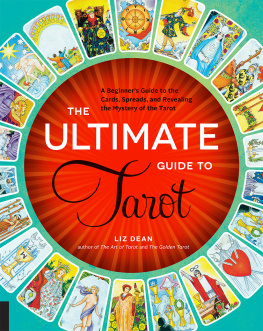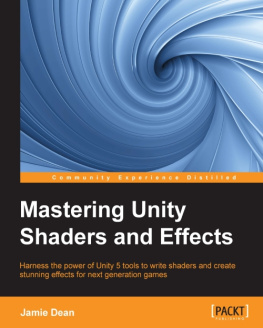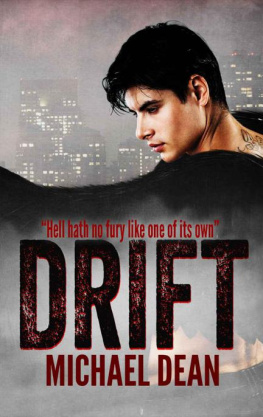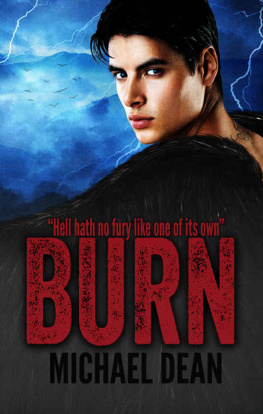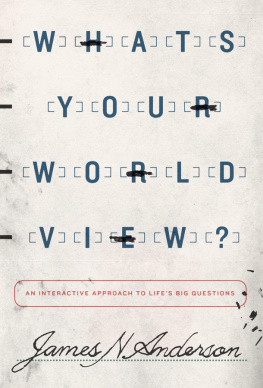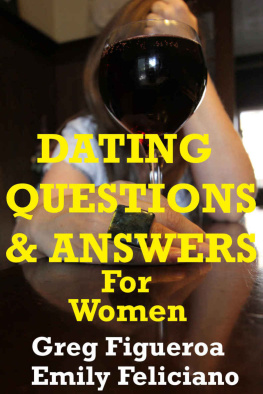Dean - Easy Steps
Here you can read online Dean - Easy Steps full text of the book (entire story) in english for free. Download pdf and epub, get meaning, cover and reviews about this ebook. year: 2014, publisher: ShadowSpell Publishings, genre: Science fiction. Description of the work, (preface) as well as reviews are available. Best literature library LitArk.com created for fans of good reading and offers a wide selection of genres:
Romance novel
Science fiction
Adventure
Detective
Science
History
Home and family
Prose
Art
Politics
Computer
Non-fiction
Religion
Business
Children
Humor
Choose a favorite category and find really read worthwhile books. Enjoy immersion in the world of imagination, feel the emotions of the characters or learn something new for yourself, make an fascinating discovery.

- Book:Easy Steps
- Author:
- Publisher:ShadowSpell Publishings
- Genre:
- Year:2014
- Rating:5 / 5
- Favourites:Add to favourites
- Your mark:
- 100
- 1
- 2
- 3
- 4
- 5
Easy Steps: summary, description and annotation
We offer to read an annotation, description, summary or preface (depends on what the author of the book "Easy Steps" wrote himself). If you haven't found the necessary information about the book — write in the comments, we will try to find it.
Easy Steps — read online for free the complete book (whole text) full work
Below is the text of the book, divided by pages. System saving the place of the last page read, allows you to conveniently read the book "Easy Steps" online for free, without having to search again every time where you left off. Put a bookmark, and you can go to the page where you finished reading at any time.
Font size:
Interval:
Bookmark:
Find the Magic
How to Plot a Story in 10 Easy Steps
by
Alicia Dean
~*~
ShadowSpell
Publishing
~*~
Find the Magic How to Plot a Story in 10 Easy Steps
COPYRIGHT 2014 by Alicia Dean
ShadowSpell Publishing
All rights reserved. No part of this book may be used or reproduced in any manner whatsoever without written permission of the author, except in the case of brief quotations embodied in critical articles or reviews.
Published in the United States of America
Cover Art by Kathy L Wheeler
Sample text from the book:
For me, it is helpful to break my story down into 5 parts. I will show you the blank form, and then I will show you how I filled it in for WM. (If it is a romance, you need to consider both the danger/external plot, and the relationship as youre going through these steps)
A Inciting Incident. The first time character knows their normal life has been interrupted. Something bad, or at least problematic, happens. This is when the character knows they have to take action. Its good to introduce the things that matter to the character. The opening is not necessarily the first scene in your book. Scenes can lead up to the opening. This is when you will present your hook and there will be no turning back for the character. (In a romance, the hero and heroine should meet somewhere around this time)
B First Crisis The character starts to discover what is really happening, what is expected of them. Something bad happens, and things are getting worse. In a romance, they are starting to realize their initial attraction is something deeper. Or, they can just now really be realizing their attraction.
C Second Crisis They fight back. The character could possibly make a mistake here, even though they think theyre doing the right thing. Something even worse happens. Feelings increase but they know they have to resist. They give in to their feelings some, but it causes something bad, or negatively affects the relationship.
D Third Crisis A twist, a new event that escalates the danger/suspense, or if its not a suspense, a new event that escalates whatever the external conflict is. The character now knows everything, or most everything about the villain and whats happening, what they need to do. A physical love scene usually happens by now, if it hasnt already. Oftentimes, the character has screwed up and has to change directions. Even worse things are happening.
E The Black Moment It all comes crashing down. Critical moment when they have to act and have to make the right choice. Something happens to destroy their love and they know they will lose them. Secrets are revealed, they must make a sacrifice, fight back, all looks hopeless, then HEA
How I filled this out for Without Mercy:
(End of sample text from book)
Table of Contents:
Steps:
This book is designed to help writers though the difficult and lengthy task of taking an idea and characters and turning them into a storywhether it be short story or a novel.
I have read several books on writing and the thing I dislike about many of them is the lengthy introduction. So, I will make this one brief.
I have written and published twenty plus stories/novels. I have learned a great deal about how to make the process more streamlined, quicker, and simplerfor me. That doesnt mean my latest method (and I say latest because I could possibly tweak the process with my next story) works for me.
Let me provide you with a quick list of facts. Well call them good news and bad news
Good news: I am a decent writer with moderate success.
Bad news: I am not a great writer with mega success.
Good news: This method works well for me
Bad news: It doesnt work for everyone
Good news: If you commit and follow all these steps, you will finish a story.
Bad news: It wont necessarily be a good story. Im sorry, but that is up to you. No one can teach you how to be a good writer. It takes desire, talent, and a lot of practice.
Good news: I am a plot driven writer and my plots are usually pretty solid, pretty well-done.
Bad news: I suck at characterization. I can flesh out my characters until the cows come home, and I know them very well, but I cant seem to convey that on the pages like I should. Ive had many reviewers say they couldnt connect with my characters. (The point is, we all have strengths and weaknesses. I cant teach you to be a good character-driven writer. We are what we are). All I am attempting to do is teach you my method for developing a solid, well-constructed story in a quick and streamlined fashion.
(Throughout this book, I will scatter extra nuggets which are just random tips I feel are useful. This, to me, is the most important nugget, so I will be repeating it from time to time: Keep writing, quick and crappy, each pass improves.)
The book Ill be using as an example is Without Mercy. Let me tell you a little about how WM (I call it my white whale) came to be, then well get started.

I began writing WM in 2009. I really liked the ideaa single mothers life is invaded by a group of mercenaries who murder people wily nily in order to coerce her to do what they say. Over the following five years, I kept stalling on WM, putting it down, picking it back up, etc. Finally, in 2014, I revisited the story, applied my method, and finished it. The novel is now published. I am using WM to illustrate, because it was the most challenging.
Caveat: You do not need to have read WM in order to use the following method. However, there will definitely be spoilers, so if you plan to read it, you might want to do so before you finish reading this.
Although WM is a suspense with romantic elements, the process I will be showing you works with any genre.
Ive always thought I was a plot-driven writer, but it has come to my attention that a true plot driven writer does things like graphs and charts and excel sheets and storyboards. Author James Ellroy writes outlines of several hundred pages. Are you kidding me? No thank you! It obviously works well for him, but Im too lazy to write that way. I would have a couple of books completed by the time I wrote several hundred pages of an outline, so Ill just skip that step. (He also writes long hand and has never used a computeryikes!)
On the other end of the spectrum, Ive never understood how a true pantser creates a story. I must have an idea of what my characters will face, of who the other players are, what their goals are, etc, before I know what kind of situations to write my characters into. Unfortunately, I am not one of those blessed writers whose characters speak to them and write their own story. The characters, the plot, everything, comes out of my head. Therefore, I am responsible for whipping it into shape. I have concluded that I am a Plantsera combination of plotter and pantser.
I hope you will find this book helpful. The bottom line, we all have our own process, what works best for us. We have to figure that out ourselves, but it never hurts to learn about other methods. Who knows, we might just find that Magic Formula.
Steps:
(Following these steps might seem a little time consuming, but its worth it, and much quicker than writing a several hundred page outline. Rushing through a story is the worst thing you can do. Take the time now to develop a solid story, and it will save you time in the revision stage)
Take your idea, then figure out the characters who will be in your story. The best thing to do is decide, based on your idea, who would be the most interesting person to thrust into the situation. For WM, I had an idea of a bank robbery that turned out to be a more elaborate, diabolical plan. I decided a single mother would be the best person to face that situation, because she would be desperate to protect her child.
Next pageFont size:
Interval:
Bookmark:
Similar books «Easy Steps»
Look at similar books to Easy Steps. We have selected literature similar in name and meaning in the hope of providing readers with more options to find new, interesting, not yet read works.
Discussion, reviews of the book Easy Steps and just readers' own opinions. Leave your comments, write what you think about the work, its meaning or the main characters. Specify what exactly you liked and what you didn't like, and why you think so.

